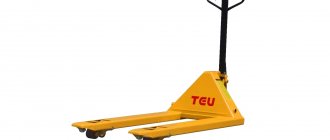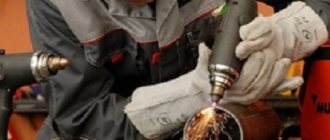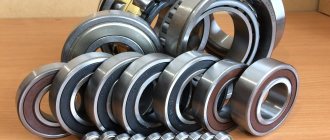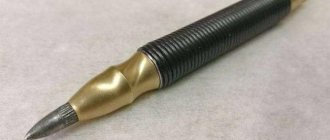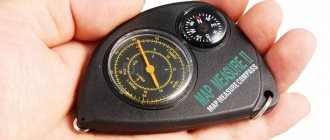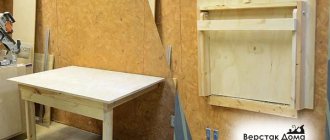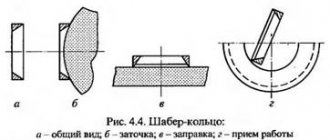January 29, 2022 kmelectric equipment and faults
Relatively recently, it was almost impossible to organize effective work at the crease. Any attempts to speed up the pace of loading/unloading led to injury to personnel. However, with the advent of hydraulic trolleys, everything changed dramatically. It is important to note that certain models of the above equipment have the ability to lift and move weights up to 3 tons without any problems. At the same time, naturally, a forklift (as hydraulic trolleys are called, since the first such equipment was supplied by the Rokla brand) is much more affordable than a forklift.
You can order a hydraulic trolley in St. Petersburg. Here, clients will be offered professional hydraulic trolley repairs. Reliable equipment will ensure uninterrupted operation of warehouse premises and reduce injuries to loaders to zero.
What does it mean
Until the sixties of the twentieth century, loaders worked in warehouses, manually carrying and lifting heavy loads onto racks. Labor productivity was very low. It was impossible to quickly unload goods that weighed more than 1 ton. Therefore, at the end of the forties of the twentieth century, foreign companies invented and released the first models of rokhli, which quickly gained popularity all over the world. Today, large warehouses, industrial areas and shops are filled with devices of various modifications and manufacturers from different countries.
The global market presents equipment with a variety of functional features:
- • With low and high load capacity from 2 to 5 tons.
- • With small or large villas.
- • With single or double wheels.
- • Lifting with legs.
- • Electrically driven.
Recently, products with improved designs have been produced with electronic scales and label printers.
Hydraulic rokla or rokhla: what is the correct name?
In the sixties of the twentieth century, the name came from the Finnish company Rocla Oy. Models from this manufacturer began to arrive in the USSR and were sent to warehouses to help auxiliary workers, who found it easier and simpler to pronounce the word “rohlya” than “hydraulic trolley.”
Historical reference
Finnish manufacturers did not have time to produce the required number of fork carts, so the Soviet Union entered into contracts for the supply of equipment with Bulgaria. Until the collapse of the USSR (1991), Bulgarian, Skladova Tekhnika, Yantra, Simetro imported transporters.
In the early 90s of the last century, models from other countries, such as Denmark, England, Italy and Germany, began to arrive in the Russian Federation. But Russia had to abandon their goods due to the high cost.
At the beginning of the 21st century, major changes occurred in the world economy, and European companies had to replace the production of simple hydraulic carts with more high-tech units. And the production of old equipment was established in Asian countries where there is cheap labor. The PRC has also organized its own concerns. Therefore, the price of products varies greatly and depends on the supplier.
Forklift Brands Today
When choosing and purchasing equipment for loading goods, you should pay attention not only to the cost, but also to the country of manufacture. Defective products are often found when counterfeiting well-known European and American brands. But if the equipment passes the quality control department and is controlled by the shareholders of famous companies, then it reaches the market without complaints from buyers.
For example, the Chinese company Noblelift Equipment, together with the Americans, produces the NOBLIFT model, which will be much cheaper in cost than a similar product from the USA.
We will show you the percentage of transporters purchased by different manufacturers:
- • 20% of consumers purchase carts from China and other Asian countries, as they are attracted by the very low price. Grost is the most popular.
- • European models Lema Engineering, Otto-Kurtbach were in first place in demand (70%) due to high quality and low cost.
- • Famous products from world brands Rocla, Jungheinrich, Pfaff Motion, Yale, BT are available only to ten percent of consumers.
What types of bastards are there?
Today, there are various versions of hydraulic trolleys https://advanta-volgograd.ru/skladskaya-tekhnika/telezhki-gidravlicheskie.html, which perform a wide range of tasks thanks to additional functions. For example, with the help of certain models you can change the center distance between the forks, as well as weigh or even tip the load. In addition, when choosing a suitable ripper, you need to pay attention to the following performance indicators:
- Fork size (600-1800 mm, but sometimes 3000 mm)
- The design of the working console and a set of operating mode switches (the more, the better)
- The presence of a brake that allows you to use the hoe on an inclined surface
- Raft class and load capacity – small (up to 1500 kg), medium (up to 2500 kg) and large (from 2500 kg)
- Lifting height – up to 200 mm
- Fork extension height
- Dimensions and material of tires (cast iron, polyurethane, aluminum, steel)
- Front rollers (mostly double ones)
Based on the above parameters, you can select a hydraulic trolley depending on the tasks for which it will be used. For example, for work in warehouses and in railway cars, the best option would be a ram with a villa of reduced length for better maneuverability in a confined space. If you need to simultaneously grab two pallets with cargo, then it is recommended to use a longer villa, provided there is sufficient space for maneuver.
Where and how to apply
The transporter with a small carrying capacity has proven itself to be excellent for moving goods in large vehicles.
In the video we will show how rocla is used:
Advantages of warehouse equipment:
- • Use in all weather conditions. Rohlya is intended for work indoors and outdoors at air temperatures down to -50 degrees.
- • Low cost per product allows you to purchase equipment for any organization.
- • With proper use, the cart can last from 8 to 10 years.
- • Maintenance is simple and does not require special technical knowledge.
- • Problems can be corrected right at the workplace (no need for a specialized workshop).
- • The load capacity of the rokla is from 2 to 5 tons.
- • Thanks to its dual wheels, it can be used on uneven floor areas.
- • Small dimensions allow you to work in narrow corridors, small rooms, and vans where large technical equipment cannot reach.
- • With the help of a hydraulic system responsible for loading operations, even a woman will be able to operate the warehouse apparatus without the use of physical force.
Electric and self-propelled stackers
For businesses with frequent pallet removal and loading operations, an electric lift stacker is the best option. The speed of lifting cargo with such a stacker is many times higher and, as a rule, is 90 mm per second. The savings in time and effort are colossal.
Manual stacker with electric lift and fully electric self-propelled stacker.
If the workshop area is large and there is intensive cargo traffic with frequent movements, it is necessary to choose a fully battery-powered self-propelled stacker. It not only makes loading heavy pallets easier and faster, but also allows you to overcome small slopes and differences in floor heights. In places where three people are trying to drag a hand-held truck with a heavy pallet, a self-propelled stacker can pass without difficulty.
The widespread stereotype that warehouse equipment is intended only for large enterprises is gradually becoming a thing of the past. The development of battery technology has contributed to the emergence of lightweight, cheap, reliable stackers and electric pallet trucks. Now small businesses can significantly simplify and speed up their work processes with the help of affordable warehouse technology. The costs of its acquisition and operation are more than recouped.
If you have any doubts about the need to purchase a stacker/rafter or find it difficult to choose, then contact our TelferPRO and we will find the right solution.
What does the transporter consist of and how does it work?
The components are very simple and understandable to the average person:
- • Metal forks that lift and lower weights on pallets.
- • Handle for controlling the movement of equipment.
- • Single, paired wheels made of metal or polypropylene.
- • Foot or hand lever for raising and lowering the product.
- • Hydraulic apparatus consisting of a drive, a chrome-plated piston and an overload valve.
- • Lifting mechanism.
- • Foot or hand brakes.
The operating principle of the lifting device is similar to that of a conventional jack. It is necessary to pump the handle with smooth movements to raise the cart to the required height. Usually 6-7 movements are enough for this purpose. After this, the villas are raised to a maximum value of 0.22 m. This is enough to transport large bales over a short distance. All manipulations are performed using a pen. Also, the rotation of the villas depends on the lifting console located in the movable body of the lever device. It helps to grasp the load located in the transverse direction.
Modern technological processes have helped improve the design of the warehouse wagon. Now, with its help, you can find out the weight of the goods, change the center distance between the grips of the villas and tip over the products.
Types of trolleys, rokla (rokla)
Conventionally, we can distinguish six groups of these products according to technical characteristics and tasks performed:
Classic
| General characteristics of standard products | |
| Length(cm) | From 110 to 280 |
| Height(cm) | from 108 to 125 |
| Width(cm) | from 53 to 58 |
The length is designed to work with a standard pallet and is 1.5 meters. For these reasons, the width was designed to be 0.54 m. The height of the handle (1.24 m) is suitable for the average height of a storekeeper and makes it easy to carry out all operations. The width of the fork runners does not exceed 16 centimeters, so they freely fit into the gap of the Euro pallet. Approximate weight – 80-90 kilograms.
Extended
There is a group of products whose linear dimensions required the creation of a transporter with deep forks. In this case, the length increased to two meters. This tool is convenient for gripping, for example, a stack of plywood. The width is kept the same to maintain versatility. Of course, the weight increased to 120 kg.
Shortened
The parameters remain the same, only the fork reach is 80 centimeters. This dramatically increases maneuverability, making them suitable for use in tight warehouse spaces. Accordingly, the weight of the product has decreased by 20 kg.
Low profile
There are non-standard clearances under the lifted load, which is necessary to save space in the warehouse. In this case, trolleys with a minimum fork lowering of up to 5.5 centimeters are used. The remaining parameters remain standard. It is worth noting that such equipment is more critical to the quality of the floor surface.
Electrical
Luggage is placed on shelves at a specific storage location. For this purpose, carts with scissor lift are produced, the maximum height of which is up to 80 centimeters. To reduce physical activity, such models are often equipped with an electric drive, which helps to move without the use of force at speeds of up to 6 km per hour.
Specialized
Manufacturers of transporters offer the device with additional options. For example, electronic scales that weigh luggage with an error of up to half a kilogram. Another example is a barrel carrier equipped with a device for gripping and holding standard 200-liter containers.
| Name | Rotator for barrels | Barrel tipper | Tipper with lift |
| Model | DT250 | HD80A | DA40B |
| Description | Specialized up to 210 liters; | With tipping function – 210 l. | Lift function to a height of 1.35 meters. |
| Gr. lifting capacity in kilograms | 250 | 364 | 400 |
| Size(cm) | 57,2 | 57,2 | 57,2 |
| Trolley weight (kg) | 42 | 50 | 190 |
Recently, companies have begun to equip warehouse equipment with high-tech devices: a barcode scanner and a router. This greatly simplifies indoor logistics.
Characteristics (weight, load capacity, fork length, lifting height)
For different warehouses and different conditions of use, the design of the device should be different. Most of them can be stored and moved by a classic-looking transporter.
The dimensions and weight of the raft, depending on the manufacturer, may differ in terms of load capacity and wheel diameter.
| Load capacity | T | 2,5 |
| Platform length | m | 1,15 |
| Width | m | 0,55 |
| Platform height | m | 0,2 |
| Number of wheels | PC | 2/2 |
| Rear wheel diameter | cm | 20 |
| Roller diameter | cm | 8 |
Dimensions
To handle larger luggage, an extended trolley is available. It is distinguished from the first by a fork length of up to 2 meters and an increased weight of up to 3 tons.
Lifting height
The norm is a maximum distance between the floor and the top of the platform of 22 centimeters. This parameter allows you to move standardized pallets smoothly, preventing goods from tipping over. There are models with a minimum lowering of up to 0.055 m. Typically, the clearance under the pallet should be 8 cm. A special type are devices with a scissor lift, which allow you to raise the container by eighty centimeters. This makes it easier to move parts. This type of transporter is often used in production.
Fork length
In tight spaces, if the dimensions allow, it is convenient to use a cart - 0.8 meters. This product has a smaller turning radius and is lightweight. In this case, the maximum liftable load should be no more than 500 kilograms.
Load capacity
This function depends on the power of the jack, on the ability to withstand the loads of the entire mechanical structure (fork rigidity, thickness and strength of rod parts, correctly selected rollers).
Weight
Modern products compare favorably with their predecessors. Due to the use of high-quality steels and the correct fit of all components of the mechanisms, the weight has been significantly reduced. This reduced the workload on employees, and performance was not affected.
Features of hydraulic trolley
Depending on the tasks performed, it is often necessary to equip the tool with consumables - wheels. During merciless operation in production areas with uneven floor surfaces (cracks and potholes in asphalt, concrete), roller bearings and wheel tires often fail. After just a year, they have to be repaired or completely replaced.
The material used to cover the wheel rim is made from:
- • Made of rubber. Carts with such rollers move well and silently over lumpy floors, without slipping on the tiles. They are not afraid of liquid spilled on the surface, such as water, methyl alcohol, denatured alcohol. Withstands negative temperatures. Rubber tires cover rims made of steel or aluminum.
- • Made of nylon. Wheels made of this material hold large loads well. The downside is poor cross-country ability on uneven roads. Hydraulic conveyors with such rollers are supplied to food and pharmaceutical industries, as they are not afraid of aggressive chemical compounds (alkaline and acid solutions, various solvents, oils, salt and ammonia).
- • Made of polyurethane. These wheels are famous for their durability; they last four times longer than the ones listed above. Do not be afraid of the aggressive effects of chemicals.
Replacing worn rollers and wheels is no problem. After this procedure, your baby will last for a long time. You can find the entire range of necessary products on the website of the trading and production company MPlast.
The equipment is equipped with:
- • Brake systems. Operation showed the need to immobilize the wheels. This is important if the surface of the warehouse has a slope. Many modern models are equipped with a rolling stop device. The control handle can be located either on the handle or below, next to the rotary wheels.
- • Product weight meters. A very useful option that allows you to significantly reduce the time a storekeeper spends on accounting.
- • Retractable forks. In some cases, it is necessary to lift weights not from the floor, but from a certain height. A simple device greatly facilitates the work of loaders and installers.
- • Lifts. Engineers have developed lifters capable of not only moving, but also lifting containers with products to a height of up to 80 centimeters.
Types of forklifts
The definition of “ forklift ” unites a wide class of mechanisms that have a working gripping member that holds a load in the form of a fork. The lower grip of the load with the fork ensures that its center of gravity is located above the gripping device. This ensures greater stability and lack of overweight over a wide range of weights. As a result of this solution, there is no need for a counterweight significantly exceeding the weight of the load.
Forklift
At the same time, when moving loads with a high center of gravity, there is a danger of it tipping over. Taking into account this design feature, depending on the type of drive and design, forklifts are divided into groups.
By drive
- electric forklifts – drive of the lifting-lowering and moving mechanism is electric (battery),
- pneumatic trolleys - a manual mechanism with a pneumatic drive for lifting and lowering the load,
- hydraulic carts are mechanisms in which hydraulic equipment is responsible for the lifting and lowering operation.
- ICE loaders are forklifts with a power plant powered by an internal combustion engine (gasoline or diesel),
- combined loaders - electric or internal combustion engine travel drive, hydraulic or electric lifting and lowering drive.
Electric trolley
By design and application features
- off-road forklifts, the distinctive feature of which is high ground clearance (clearance), as well as 2 or more drive axles,
- reach takers – loaders with a side grip and a manipulator with 3 degrees of freedom,
- side forklifts – machines with side grip,
- Stackers – loaders designed for stacking cargo.
Stacker
This classification is not exhaustive. Despite the fact that GOST 13188-67 is in force for this type of mechanisms in Russia, this does not limit manufacturers. There are specially designed forklifts, most often a combination of the above characteristics in one machine. For example: self-propelled, manual hydraulic stacker; electric stacker.
How to choose a hydraulic pallet truck
To make a decision on choosing a product, you need to decide on the tasks that need to be performed. You need to understand under what conditions and how intensively it will be used, what maximum weight needs to be moved. Should you spend money on improved models with additional options, such as electronic scales and a barcode scanner?
How to use a hydraulic trolley
With the hydraulic lever engaged, the loader makes the worker 75 times stronger. The technology allows you to move palletized loads weighing several thousand kilograms without a drop of sweat. The forks lift the pallet and then lift the load to a comfortable height for transportation. Lifting is carried out after 10-12 movements with the handle - the action builds up the pressure in the jack to the required value. Models are available with accelerated lifting, when the required pressure is achieved in 4-6 movements. The disadvantage of such machines is their low carrying capacity.
A hand truck consists of three main parts: a fork, a handle with a hydraulic lever, and wheels. As for the latter, they come in different diameters: a small one gives the car maneuverability, and a large one is convenient over long distances. Polyurethane-coated wheels are ideal for smooth floors, while hard plastic wheels are suitable for outdoor use. In the second case, be prepared for a rumbling sound while transporting cargo.
Rules of care and operation
According to the technical data sheet, the service life of warehouse equipment is from three to five years. But if you care for it properly, it will work much longer.
Our recommendations:
- • Do not overload the cart. The weight of the product must correspond to the stated data in the document.
- • Distribute the mass evenly on the forks (do not lift goods at the tips of the platform).
- • Inspect the undercarriage daily. Remove objects that fall on the wheels (wire, threads, leaves, tree branches).
- • To maintain the working condition during movement, it is necessary to lift the forks by pressing the lever, which is required according to the technical specifications.
- • There is a rule: you should pull the rokla along with you. Pushing yourself in front of you is prohibited.
- • Inflation should occur as written in the instructions, from the starting point to the stop. Otherwise the node will fail.
- • Before purchasing equipment, pay attention to the condition of your floor. If the surface is deformed, the wheels of the standard model will quickly break.
- • Watch the oil level in the hydraulic unit. Avoid leakage. Change the lubricant in a timely manner.
- • If air has entered the hydraulic system, it must be removed by pressing the handle without loaded trays.
Rules for the operation of the baby
Products from famous German brands are sold with a 2-year warranty. But this is a minimum service life - a hydraulic breaker will last several times longer, provided that simple rules are followed:
- It is forbidden to load the cart more than the declared load capacity.
- Uniform distribution of the load will avoid deformation.
- In warehouse conditions, roller bearing units become dirty. Cleaning them regularly will ensure smooth movement of the cart for a long time.
- Properly selected dimensions are a guarantee of high performance. The machine should function freely without obvious signs of stiffness in movement.
- It is recommended to build up pressure in the jack through the full range of motion of the handle.
- Uneven floors cause wear on the polyurethane coating of the wheels.
Before purchasing a hydraulic pallet truck, check out all the different types available. The knowledge gained will help you choose the right model specifically for your room. Give preference to products from well-known brands - this guarantees a long service life, the ability to repair and replace spare parts. If you follow the operating rules, the equipment will last as long as possible without the need for major repairs.
Price
First of all, the price of the equipment depends on the load-carrying capacity of the product and the length of the platform. Often the cost is inflated by the manufacturers themselves and the product does not justify the functional characteristics of the product. Therefore, it is worth paying attention to the price-quality ratio.
In our article, we clearly showed in photographs what a trolley or hydraulic trolley means, and told how much it weighs and how to care for it. To better understand how the equipment works, watch the video:
